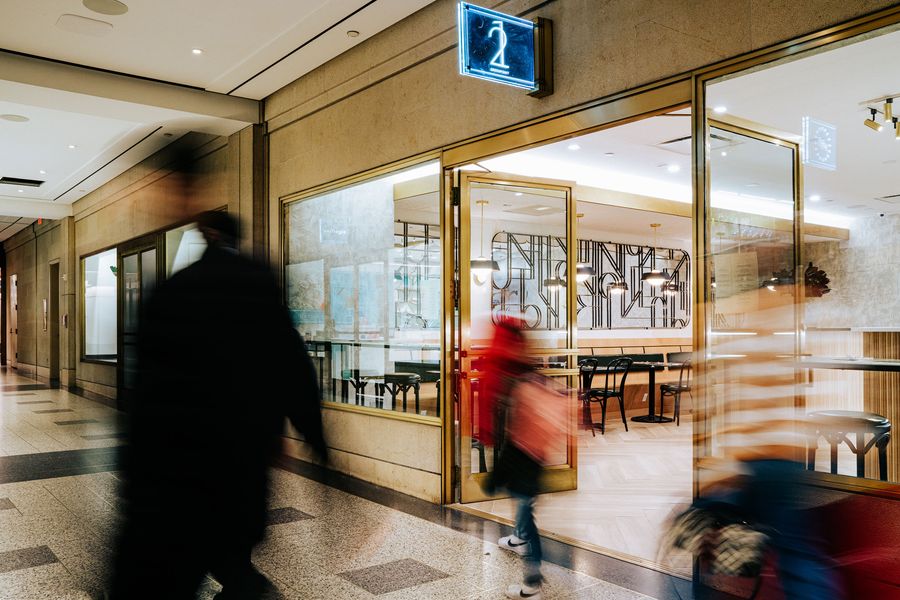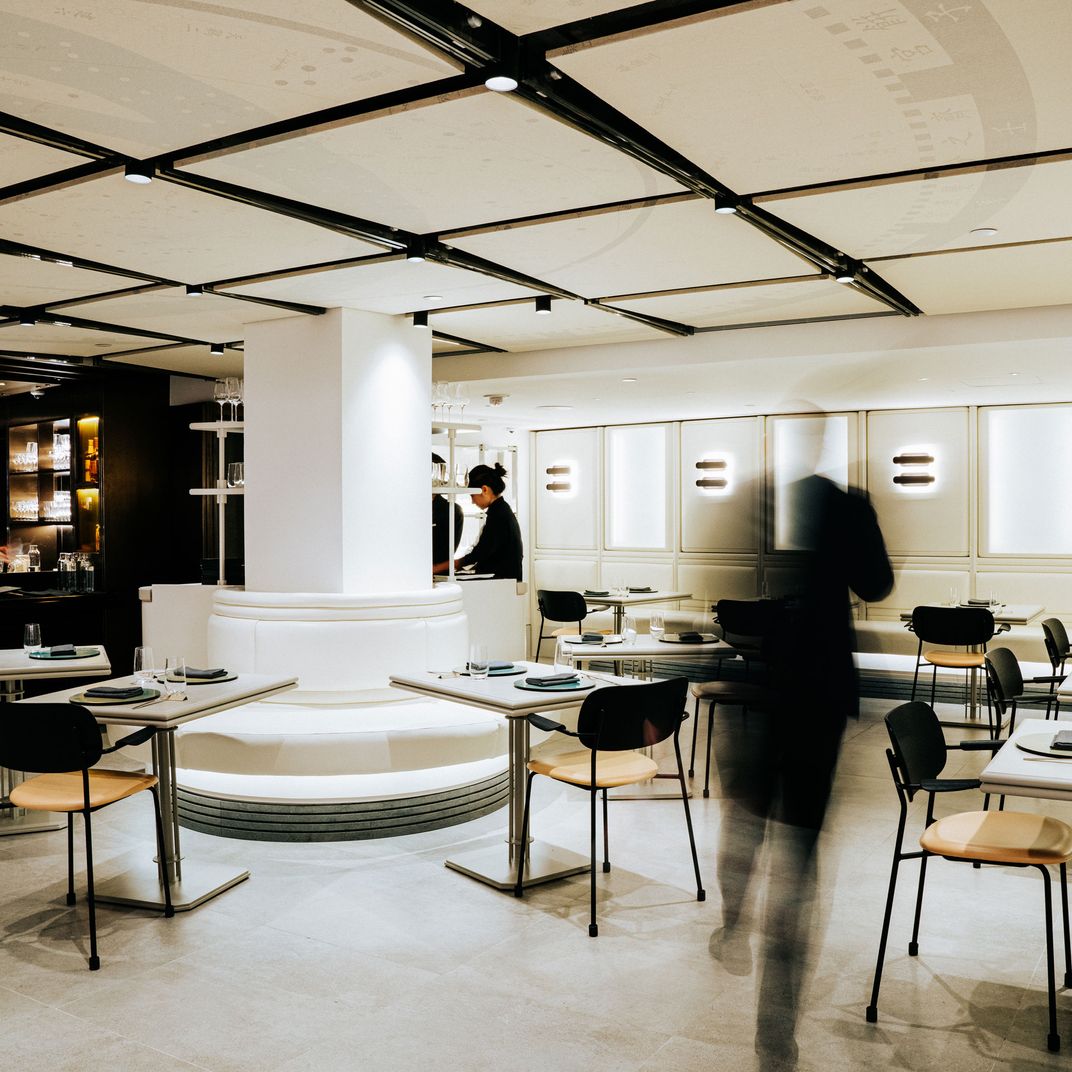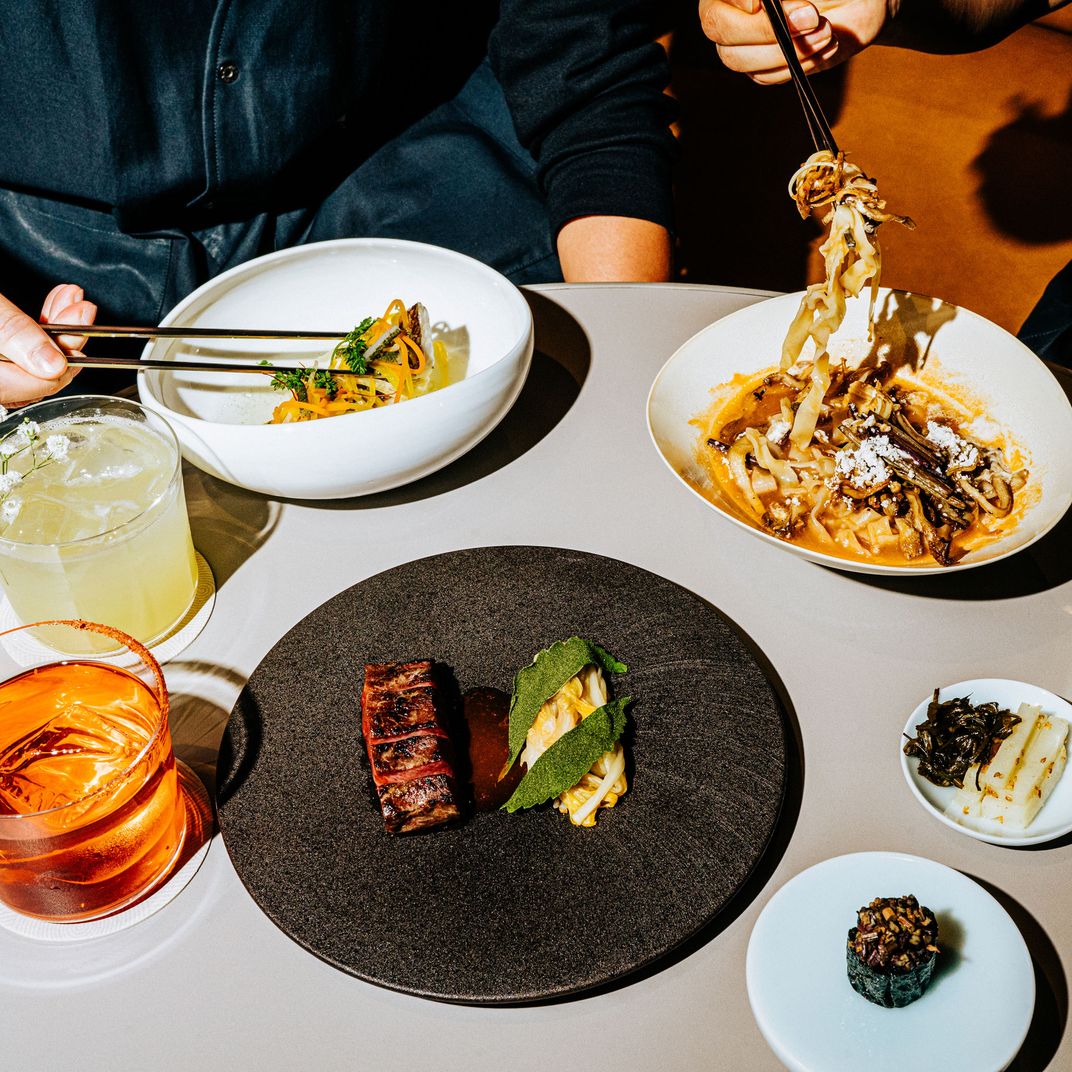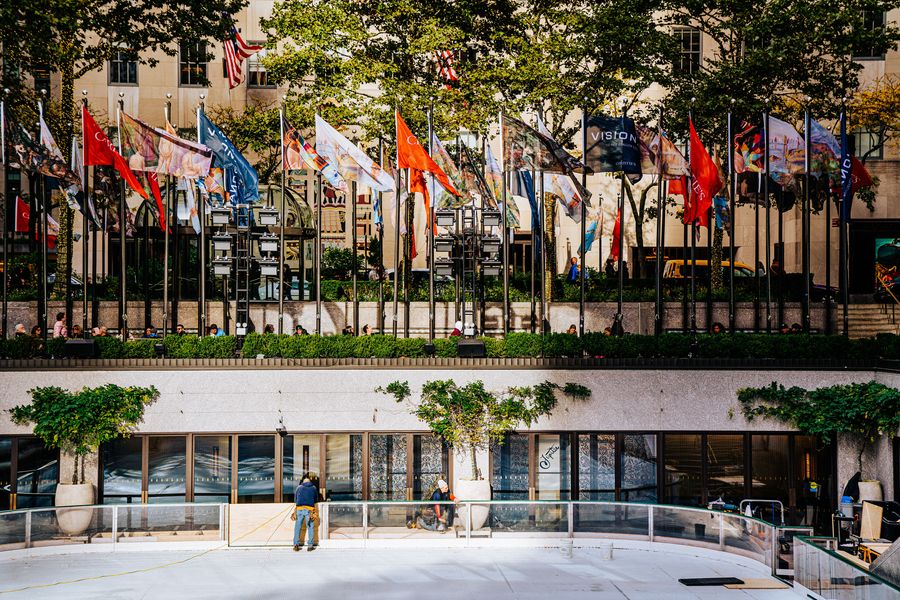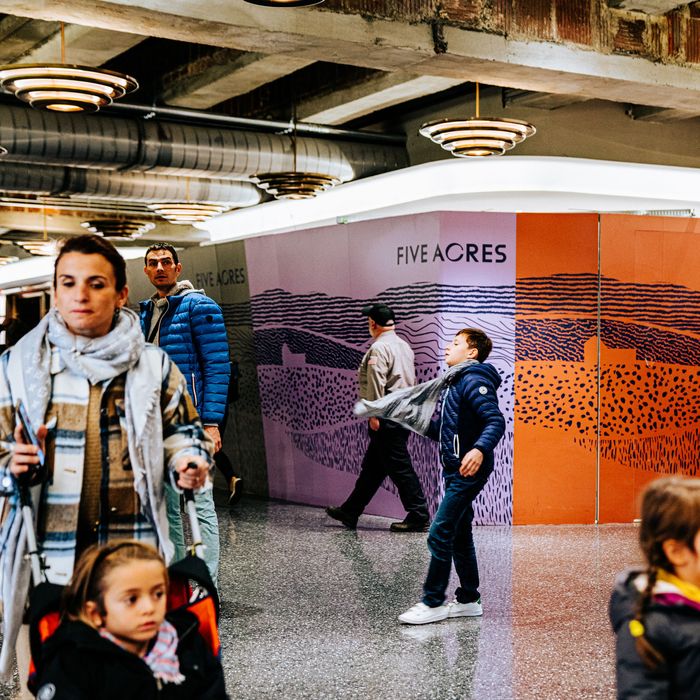
If things had gone according to plan, Rockefeller Center’s transformation into a midtown restaurant hub would have happened gradually, maybe even before the summer. Jupiter — the regional Italian restaurant from the trio of owners who made King a destination in Soho — was first supposed to open on Valentine’s Day. Then the opening was pushed back to summer. And then again until fall. There were plumbing problems and construction delays. Earlier this month, the bathrooms still weren’t operational, and the gas hadn’t been turned on. The lights had to be kept at full brightness because a dimmer hadn’t been installed.
Now, Jupiter is set to open on November 21, mere days before Thanksgiving. When it debuts, Jupiter will join a restaurant that opened less than two weeks ago: Naro, the high-end Korean restaurant from Ellia and Junghyun “JP” Park, whose spots Atoboy and Atomix are considered standard-bearers in the city’s modern-Korean dining scene. Five Acres, the restaurant from Olmsted chef Greg Baxtrom, is also on the horizon — he says the space is “two or three things” away from being ready. And 21 Greenpoint, a midtown expansion of Homer Murray’s Brooklyn brasserie, just opened its doors so quietly that the news barely got any attention in the press.
Originally, the restaurants — all of which occupy Rockefeller Center’s rink level — were set to open six to eight weeks apart. Now the timeline is looking more like six to eight days, if not six to eight hours. “We’re all scrambling,” says Murray. “It’s all going to pop off at once.” There’s one giant green coniferous reason for the rush: the annual Christmas-tree lighting, which will take place on November 30. “I’m sure there’s going to be a billion people down here on top of the fucking tree,” says Murray. Nobody wants to miss out on millions of potential customers.
Not that this is the fault of the restaurateurs, or their restaurants, which individually are the kinds of openings the city might anticipate for weeks or even months. “We meant to do Italian high-style with a Deco reference,” says Jupiter co-chef and co-owner Jess Shadbolt. The menu will have antipasti, eight pastas (such as spaghetti with bottarga and chopped chiles, and cappelletti with pork sugo, lemon peel, and sage), a risotto, and a few main courses. All of the new restaurants will be open for lunch and dinner, with Jupiter’s hours set from 11:30 a.m. to 11:30 p.m. “Those shoulder hours haven’t really come back to New York since COVID,” says Annie Shi, another co-owner. “And if you’re trying to grab a bite at three o’clock or at ten o’clock, there aren’t that many options.”
At Naro, JP Park and his chef de cuisine, Nate Kuester, are toning down the gochujang in favor of, as they’ve been noting in the press, more subtle flavors. They didn’t want the space to look like the stereotypical images of East Asian restaurants in this country, places with wooden finishes and hushed tones, or a lounge with a “Buddhism inspiration” to the design. “A lot of the detail actually comes from the Korean architecture movement,” Ellia Park says, but using different contemporary materials. “It’s still very modern but a take on the very traditional aspect to the design.”
Drinks at Naro.
The dining room.
Dishes from the tasting menu.
Drinks at Naro.
The dining room.
Dishes from the tasting menu.
Unlike Atomix — which, at the tasing-menu-only chef’s counter, is “not able to accommodate” vegan and vegetarian diets, per the restaurant’s website — Naro will have a full tasting menu for vegetarians (both menus are $195 at dinner and $95 at lunch) with dishes like tomato pyeon with sun-dried tomato, ganjang, and cilantro; kalguksu, or oyster mushrooms with parsley and pyogo broth; and a pear pavlova. Tomato also shows up in the omnivore tasting menu’s pyeonyuk, a dish of thinly sliced meat (in this case, beef shank) that has been boiled and pressed; it’s made more luxurious here with the addition of caviar. There are mandu stuffed with abalone and served with beef broth, and lamb saddle alongside sunchokes, perilla leaf, and kimchee jjim. At lunch, the tasting menu is an abbreviated five dishes, not all of which are the same as those offered at night. (The tomato jeon is swapped out for potato jeon, for one.) Should you not be in the mood for a full degustation, you can sit at the bar, where à la carte dishes are available.
“I’ve worked in a lot of different restaurants around the world, including Europe and also Australia and Korea. So in my restaurants, I’m trying to combine all the different techniques and flavors as much as possible to show guests who I am,” says JP. “But here is more about the traditional Korean flavor.”
The first two projects to open as part of the Rockefeller Center overhaul — Lodi and Le Rock — have been unqualified successes with full dining rooms and critical acclaim, but they opened ten months apart from each other. One problem facing the logjam of remaining openings is whether each restaurant will have the necessary time and space to build its own identity in the minds of customers, both the tourists who will soon arrive and the office workers who have already started to return.
With 21 Greenpoint — once a taqueria Murray ran — the goal is to make it the “Rockefeller Center P.J. Clarke’s,” he says. He’s still waiting to have the gas turned on, but he opened anyway, offering a limited menu and happy-hour martinis for $12, half the price of a “martini mansion” at Le Rock upstairs. “We would’ve loved to have been open a month already and have our full menu,” Murray says. “For us, it’s important to get people in.” He’s optimistic, though, thanks in part to the returning office workers who have been largely absent from the Center throughout the COVID pandemic. “The last two years have been pretty dark and pretty scary down here,” Murray says, “so it’s very, very welcome to see a bunch of people waiting in line for Potbelly sandwiches. Now I’ve just got to convince them to try my ceviche.”
Put another way, things are noisy right now. That was always part of the plan — Naro’s JP Park says his team probably wouldn’t have signed on to a solo project — but the headaches of multiple restaurant openings, along with the learning curve that comes when independent restaurateurs work with a megadeveloper like Tishman Speyer, have nevertheless created more problems than anyone had anticipated. For now, there’s nothing left to do but power through and try to beat that tree.



